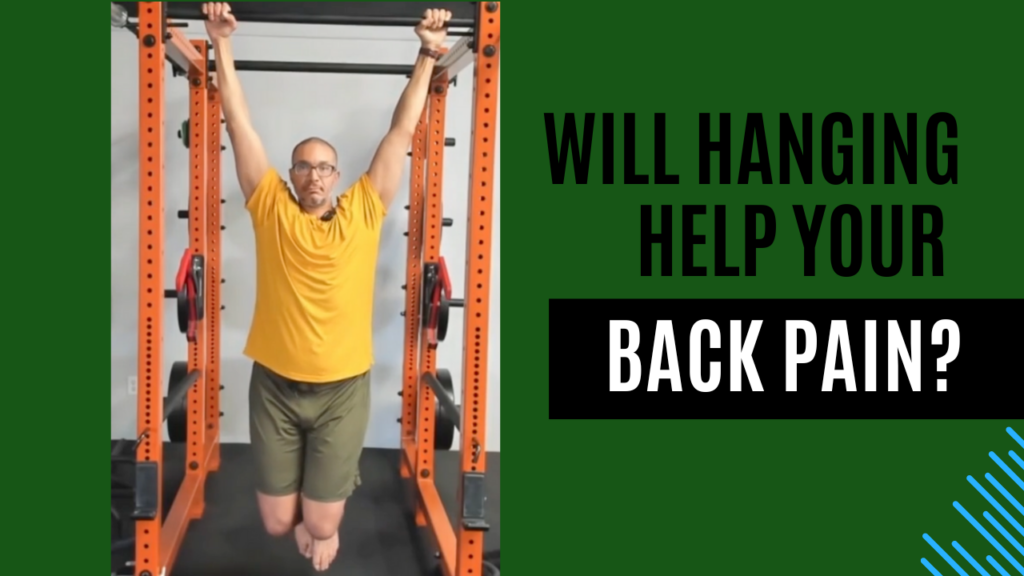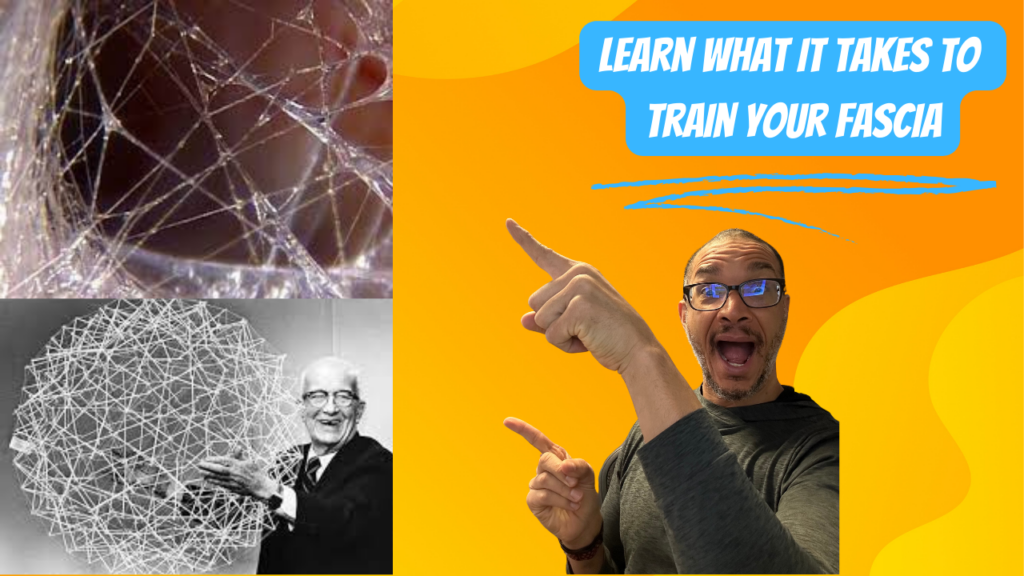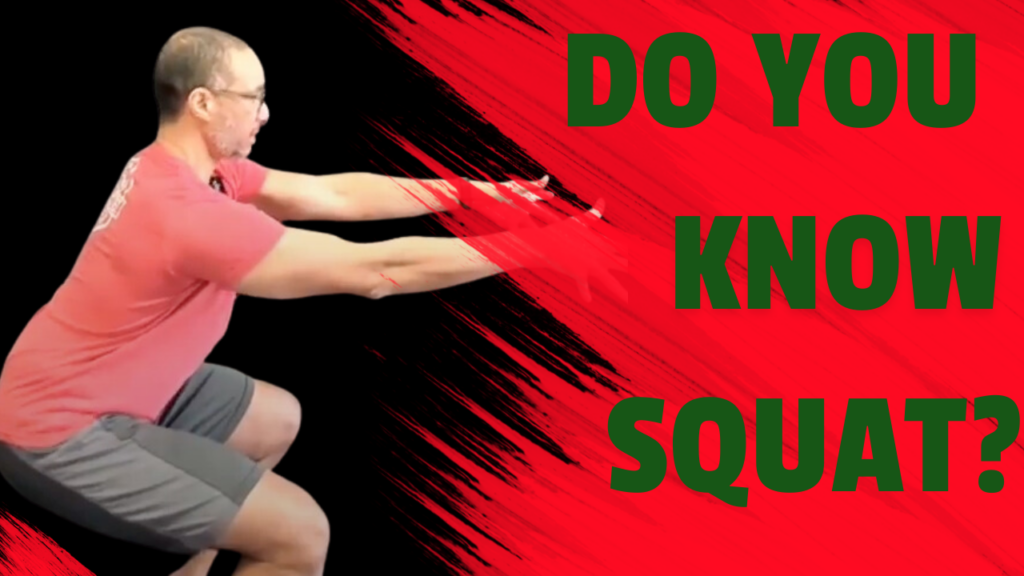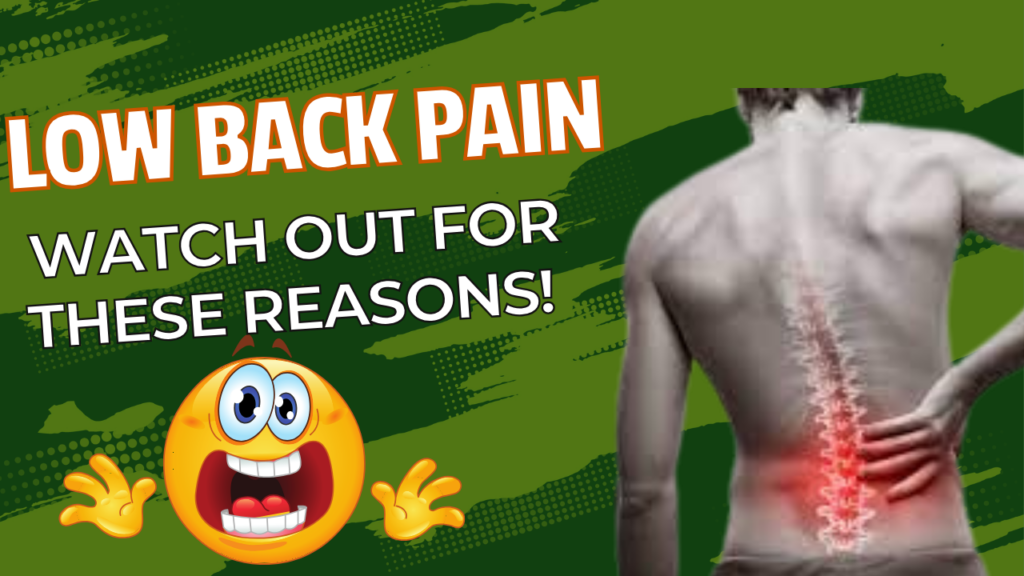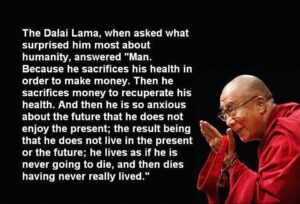Sarcopenia will progressively make your body and life worse. But keeping sarcopenia away is not as easy as going to the gym to lift weights, eating more and taking supplements and medications. Check out this video to find out more on how to keep sarcopenia away for good.
Click on the image to watch the full video
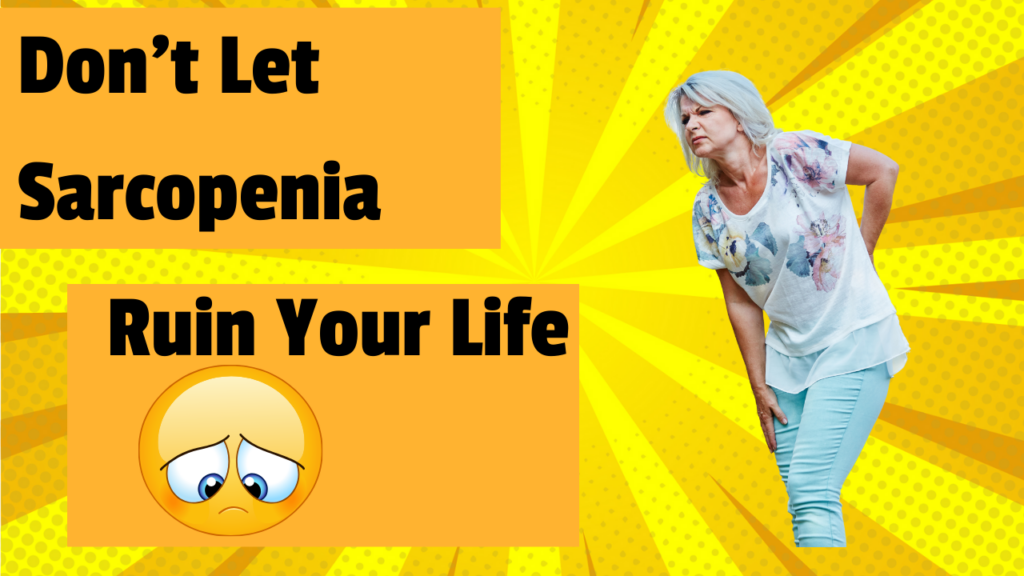
Sarcopenia. It’s a condition that generally affects the older population, 65 or older, but has been shown to start in the thirties. So what is it and what can you do about it? Stay tuned and we’ll talk about that. Hello? Hello, I’m Ekemba Sooh I own SolCore Fitness. I’m a Soma therapist and Soma trainer, which is a therapist and a trainer under the osteopathic model, and I’ve been in this field for like 30 years. So I use manual therapy techniques, osteopathic manual therapy techniques, osteopathic stretches, osteopathic exercises on top of my base level of strength and conditioning to allow people to live their best life, to help them get out of pain, to increase mobility, strength, whatever it’s they need. I get a lot of people coming in here with sarcopenia or people who are concerned about getting sarcopenia or have it progressed more and they’re concerned because they’ve gone to the doctor, they’ve taken the supplements, they’re going to the gym and working out, they’re active in their life, whatever activities they love, but it’s not getting the results that they want.
I say, well, it’s not for lack of trying, obviously it’s because you haven’t put this together in a holistic method. You can’t just piece things together and then they’ll fit together. You have to understand that everything affects everything else. So if I replace one part, I have to think, did that also affect the different parts down a row? It’s holistic, and that’s how I view health and fitness is through a holistic vet lens. Excuse me, and that’s how I want to communicate to you on this channel. So if you’re interested in a holistic type view to solve your issues, then subscribe and hit that bell. If you like this video, then give it a thumbs up, just got to click it, they’ll show up and then share it with your friends. This allows this video to get it to more people, to benefit more people.
If you want to use one phrase for sarcopenia, it’s use it or lose it. If you don’t use your body in an intentional way to keep it strong, to keep it adapting, then it’s going to go away. Now, sarcopenia is a loss of muscle tissue and the neuromuscular connections that are associated with it. This is going to cause weakness and fatigue and poor balance and having difficulty doing things like walking upstairs. And some of the causes are not using your body properly. Low hormones, bad hormones, bad process of the protein, not enough calories. Now, if you were to hear this, you’d think, okay, well I can test myself. I can just eat a little bit more, take a protein supplement, take some vitamin D or some hormones and then move my body and I should be okay. But it’s a very linear way of thinking about it. Yes, you’re going to need to do those things, but it’s all about how you put together. You want to think about whatever program you want to do is a equation or a formula that you want to put for your body. For you. You need to have the proper equation for your body. Somebody else needs a different equation for their body, same parameters,
But it’s a little bit different because when you’re in sarcopenia or you’re developing sarcopenia, of course you’re getting weak. That means the structure of your body, how well you stay balanced is going to start to degrade. So you’re going to start to get things like a kyphotic curve or your upper back or you start to shrink or you’re going to keep yourself off balance. So that obviously makes it difficult to move, but it also makes it very difficult for your body to function properly because the structure of your body dictates how you function, how well you move and how well you digest, how well you eliminate, how well you think your hormones. Everything in this house can work better if the house is balanced. And so this includes your digestive tract and your hormones because if I’m off balance, my body’s off balance and my GI tract is all twisted up and out of place, then when I have the food or the nutrients go through my GI tract, it’s not allowed to secrete the proper enzymes or the proper amounts.
It doesn’t process the right speed around your GI tract, which means you’re not getting the nutrients you want from this great food and supplements, but you got really expensive pee and if you don’t have a good balanced body, your body can’t make and process hormones the way it needs to. So you can’t just take a supplement or buy fancy supplements of really good food and expect it to just work on its own. So if those good nutrients, those good supplements and that great food that you want to start eating won’t work as well into your body is balanced the house in good structure, then how do you build your house? How do you keep that structure in place? Is it as easy as just being active? Can you just go to the gym and do different classes and do activities to use your body and have it keep it balanced?
Well, the not so subtle answer is no. Every activity you do has an end purpose. Because I go out and walk and I’m using my legs doesn’t mean it’s balancing my legs and my body. I’m using my body to do an activity. In fact, most activities are actually a little damaging to your body. It doesn’t make ’em bad. They’re good. You want to do these activities, but you have to understand the benefits and the consequences of that action. So if I just use my body in different activities, well then I also need a program to keep my body balanced. Now for sarcopenia, we want to talk about the muscles, but I want to tell you the muscles aren’t the thing that holds my body in place. That is your fascial system. The fascial system is the connecting link that connects all your body. It’s like this big, gigantic great web that holds me in place and for the purpose of this video keeps my structure in place, keeps me this way.
So you can have a good fascial system or bad fascial system that allow you to have a good posture or bad posture. So when you want to work your muscles, you understand that your muscles are surrounded by epimysium, perimysium and endomysium. Fancy names for fascia. They’re around your muscle tissue and they go out and they form the tendons that connect to the bone which connected the rest of your body. So we want to work on building your muscle. You can’t just focus on just your muscles. Yes, you want to build your muscles, but your muscles work in conjunction with three factors. It’s called hills muscle model. So you have a contractile element that’s your muscle fibers. Then you have a series element and a parallel element. The series in parallel, you don’t have to worry about the names are fascia, they’re the epimysium, endomysium and perimysium.
They’re the ligament. It’s the periosteum that connects to the bone. It’s maybe a little bit of the ligament that connects to the bone. They all work together to make sure the muscle functions best. So we want to go train your muscle, train the muscle, but train it within the system of the fascia. Have you been trying to put together the program for sarcopenia? Have you tried different techniques? Has this information have given you open your eyes a little bit more as to what it might entail? Where I want you to stay tuned because I got more to come and an opportunity for support at the end of the video. So to start trending your body to be balanced so you can make it strong and go away from sarcopenia or not even go anywhere near it. You want to start working with two main aspects you you’re going to work with the structure of your body, the balancement , and the efficiency of your neuroendocrine system.
Both these can be trained via the fassal system and that’s supported by science. So the structure of my body is supported by tensegrity. That’s basically what we are. We’re in integrity, structure or just bio. And these fascial systems help keep us in place. So I can train that and I can also train my neuroendocrine system mainly through my spine. Again, this is supported by a theory called pit and dam by Bergmark where it says that the deep muscles are control how well I move. So I get a communication from my brain, it goes down through my spinal cord, out to my body. The more efficient is keeping that communication, the better I move. So I want to start working with the fascia to increase the balance and to increase the efficiency because as we age, again, if we don’t use it, we lose it.
We lose these connections and so our body becomes weaker. But it’s well documented that through exercise and resistance training, it helps increase the nervous system, helps increase the hormonal system. And this training doesn’t have to be outside of us. You don’t have to pick up a weight to do it. You can do it through your own body weight and your own tension within your body. The two best techniques I found to do these to balance your body and increase this neural hormonal system are myofascia stretching and ELDOA. They both work with the fascia system I just talked about the myofascial stretching works to balance that tensegrity structure through the different stretches you can do through different parts of your body to make ’em line up. And then eldoa uses that fascia system to strengthen and open my spine to balance it back out so that communication from my brain through my spine to my body is more effective.
Now as you’re doing this, you’re going to make your muscle strengthening exercises much more effective because now the impulses from the brain to my body, my body to my brain are more effective. The hormones that are going to these areas as messengers are more effective that the bags that surround the muscle tissue and the epimysium perimysium and endomysium are more fluid and are function higher. That ligament that connects those muscle is more aware to give more information. Now, when you train your muscles, you want to think about train your muscles in the specific directions they need to. Here’s what I mean. You can have a muscle go in different directions called different fiber directions. A different fiber direction means that muscle can work different ways. The most basic one I can tell you is your hip muscle. So your hip muscle has three different fibers.
It means it’s three different movements. I have an anterior, a middle, and a posterior. So I can do a posture for all three positions, not just one. So I know we have, I dunno, let’s say two dozen, three dozen exercises. Everybody keeps repeating over and over again. It’s a slight exaggeration, but there’s a lot of different ways you can train your body. So I could put myself into a posture to train the different fibers of my hip muscle, but at the same time keep the myofascial tension in line because you’re not just training the muscle, you train the chain of myofascial that chain together. If I train the chain, I train holistically, that’s where we get the most benefit. Now, this may seem a little overwhelming because we got like 600 muscles and if I got a bunch of different fiber directions for each muscle, that’s a lot of different postures and a lot of different work.
But like anything, you don’t start and try to do everything. You start where you’re at and then slowly add onto what you need. You start with the most pressing area first and then work up. The most pressing area for you is the hardest because that’s where your body is tight, weak, not connected, whatever it is your body’s telling you, ID more work here. And then you work your way from there. Now, once you do that, the biggest determining factor to building muscle and do it properly is to go to and past a little bit exhaustion, not so you are totally worn out, but doing a little more than what you can. So if I do the traditional 10 reps like everybody does, I may sweat, I may feel, I probably feel accomplished both physically and psychologically, and maybe that takes me to my 45 minutes to an hour of working out.
But if I stop at that 10 reps and my body’s used to doing 10 reps, it goes, okay, thanks. See you. If I go and do more, if I do 30, 40, 50 reps and I’m pushing my muscles way past what they can do right now, I’m telling the body, Hey, I need to use this more. And the body’s like, ah, it has to adapt. It’s called compensation, a super compensation. It builds that tissue there. Now, tissue doesn’t mean you’re getting big, it means it’s adding more muscle tissue to the area, which is the reverse of sarcopenia. It’s increasing the neuromuscular connection, which is the reverse of sarcopenia, and it’s telling your body, I want to use this more. That’s exactly what you want because this will bring more blood flow, more connection, just a better quality of life because you’ve pushed yourself past what you can do. Now, this is not only an outline for sarcopenia, these different aspects I just talked about in the video.
It’s an outline for just general training. It doesn’t have to be sarcopenia that you’re working on. You always want to have a goal, assess where you are, work on your structure, especially where it’s difficult, and then build your program out from there. So if you want assistance on this, I’d be glad to help. I have a free Facebook group that you can be more interactive with. You just have to go to description below and answer some questions to sign up or if you’ve got a free ebook, it’s a four steps, how to live the Life of your Choosing to get Stronger, more Mobile and get in the description. And then down there in description two is a link to my Calendly to where we can have discussion about what your goals are, where you want to go. I’ll assist where I can, and if I see a good fit, I’ll tell you about my services. So I hope you find is beneficial. I’d love to hear any questions you have any comments below, have a great week and I’ll see you next time.

MOVE BETTER, REDUCE PAIN, AND LIVE LIFE ON YOUR TERMS
it’s not just working out, it’s building a foundation for a better life.
Find out more @
